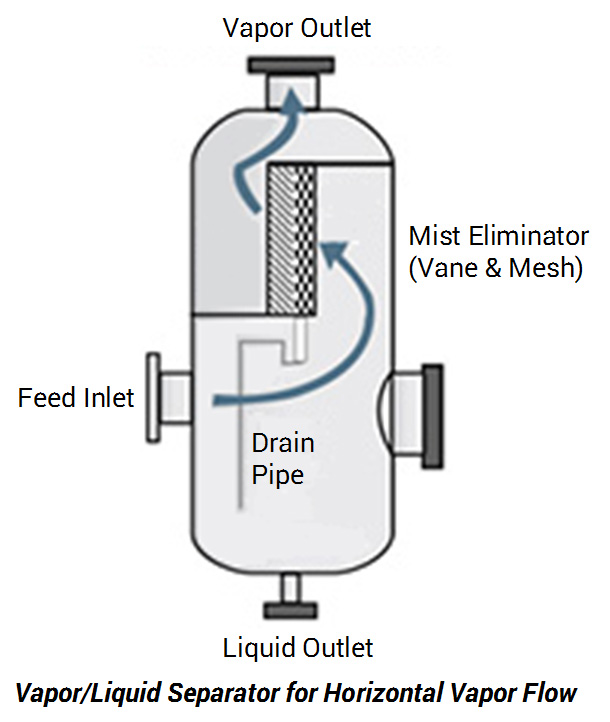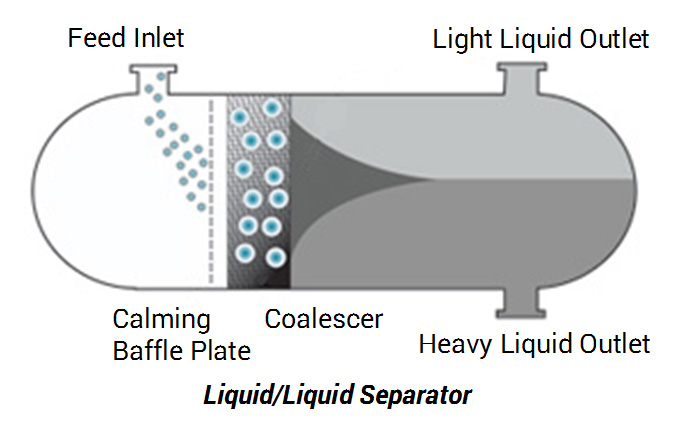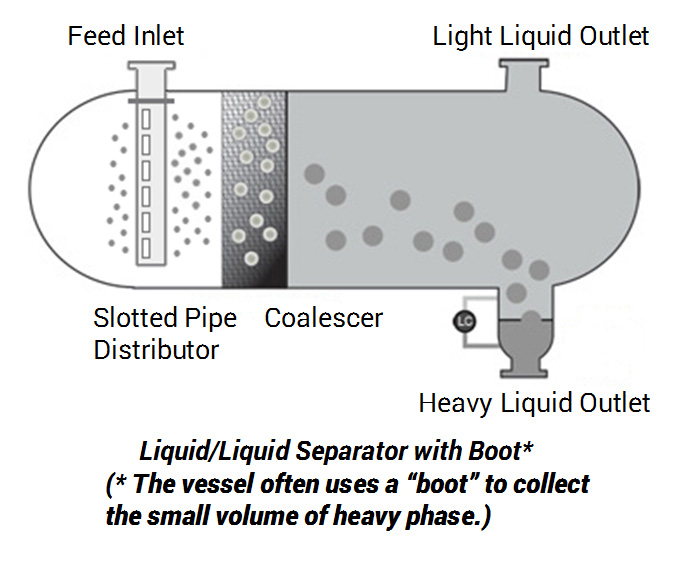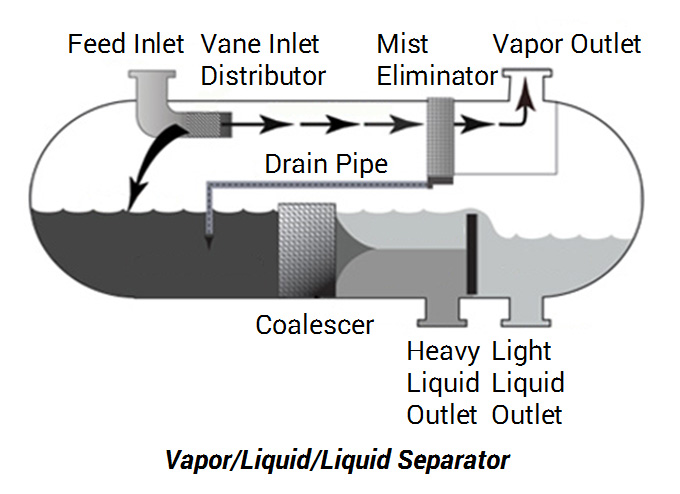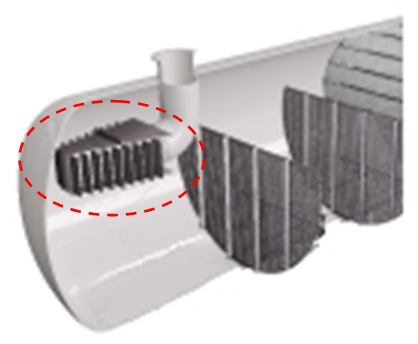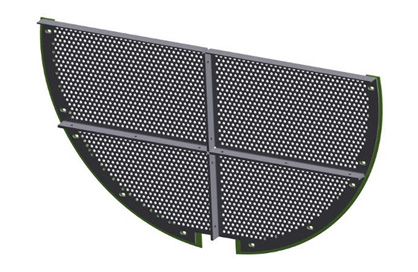Additional Information
THE BEST PARTNER HANBIT SOLTECH
Associated Internals
In liquid-liquid separations, the volume of the dispersed phase present in the feed can widely vary. In case of the feed-line flow is three-phase, the droplet size distribution can also have a wide range because it is flowing at a higher velocity due to the presence of the gas. High velocity causes turbulence in the inlet line that can create very small droplets, particularly when the vapor-liquid surface tension and the liquid-liquid interfacial tension are low. Therefore, proper design of the feed inlet device is one of the critical factors to improve an efficiency for the gas-liquid or liquid-liquid separation process.
Slotted Pipe Distributor
For a new installation, a slotted-pipe distributor introduces the feed to the vessel and directs the inlet mixture at low velocity toward the upstream head of the vessel. This prevents turbulence effects at the inlet from affecting the rest of the vessel.
Vane Inlet Distributor
For the feed inlet, designs often use a vane inlet device that gradually reduces the momentum of the incoming stream to minimize turbulence and droplet formation. Such devices can also act as the first-stage gas-liquid separation.
Calming Baffle Plate

